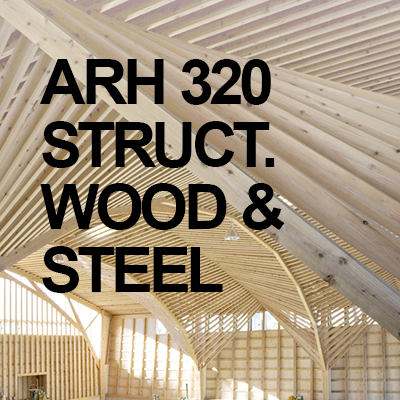
ARH 320 Structures: Wood & Steel
Collaboration between architects and structural engineers determines the success and safety of a building. Seeing architecture from the perspective of a structural engineer, you will evaluate the unique properties of wood and steel, common structural materials in the US, in response to gravity and lateral forces.
Prerequisite: ARH 239, LA 296
Featured Image: Kitazawa Kenchiku Factory
Course Learning Outcomes
- Identify and name the main structural elements in wood and steel buildings.
- Calculate, using straight forward methods and approximations, the forces on a wood or steel building.
- Distribute, using straight forward methods and approximations, building forces to structural members.
- Design the typical structural members in a wood or steel building, supporting floors.
- Design columns in a wood or steel building based on axial strength considerations.
- Select and design the most appropriate footings for a wood or steel building.
- Analyze and discuss of the basic principles of structural behavior in withstanding gravity and lateral forces and the evolution, range, and appropriate application of contemporary structural systems.
